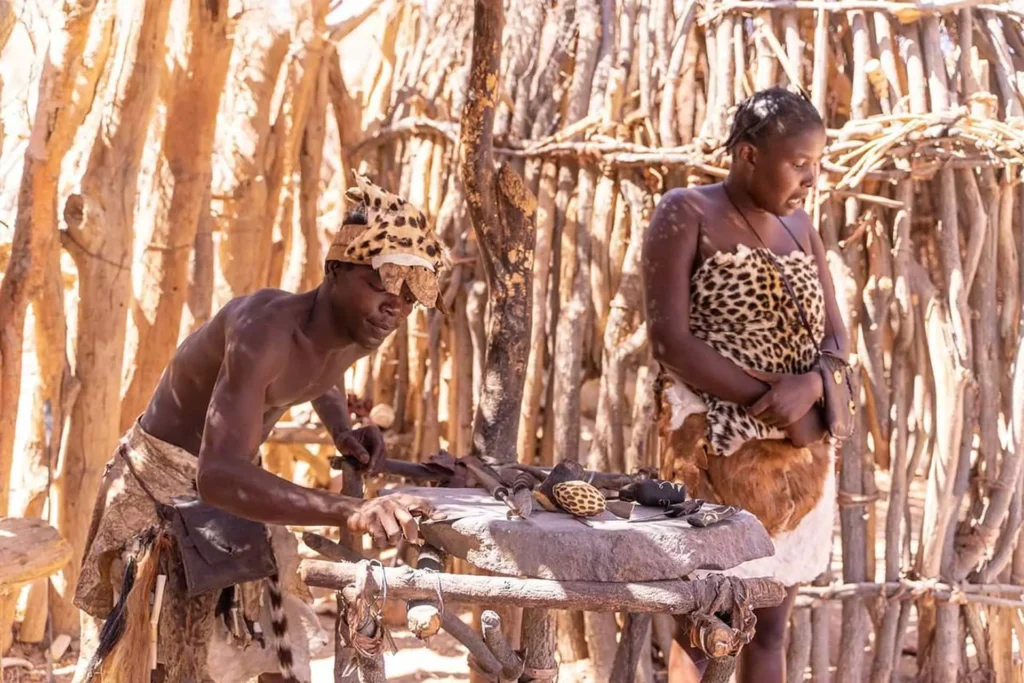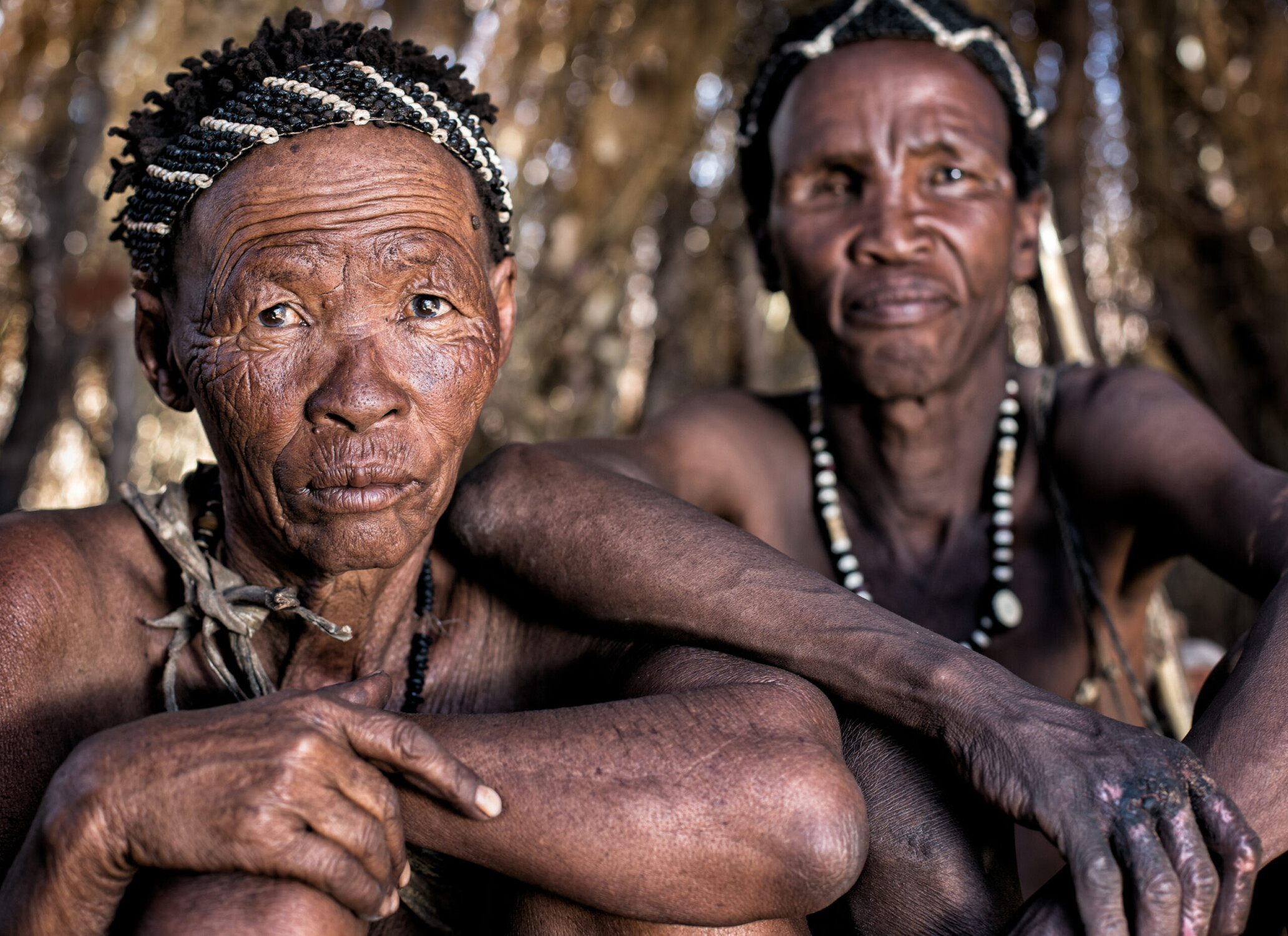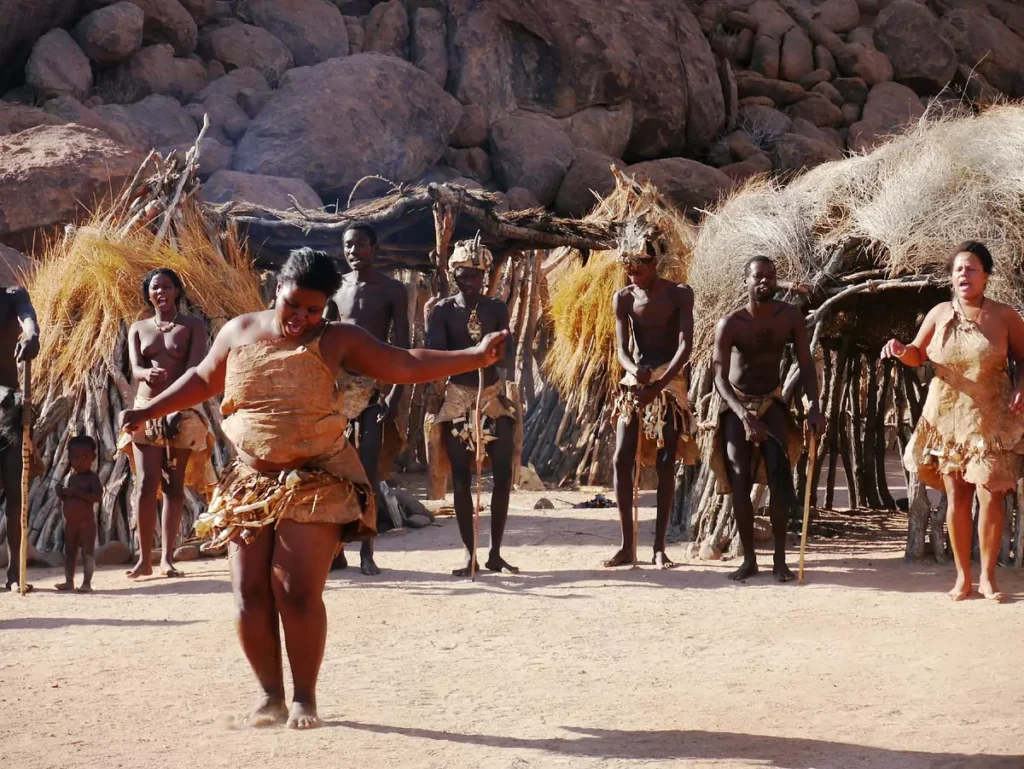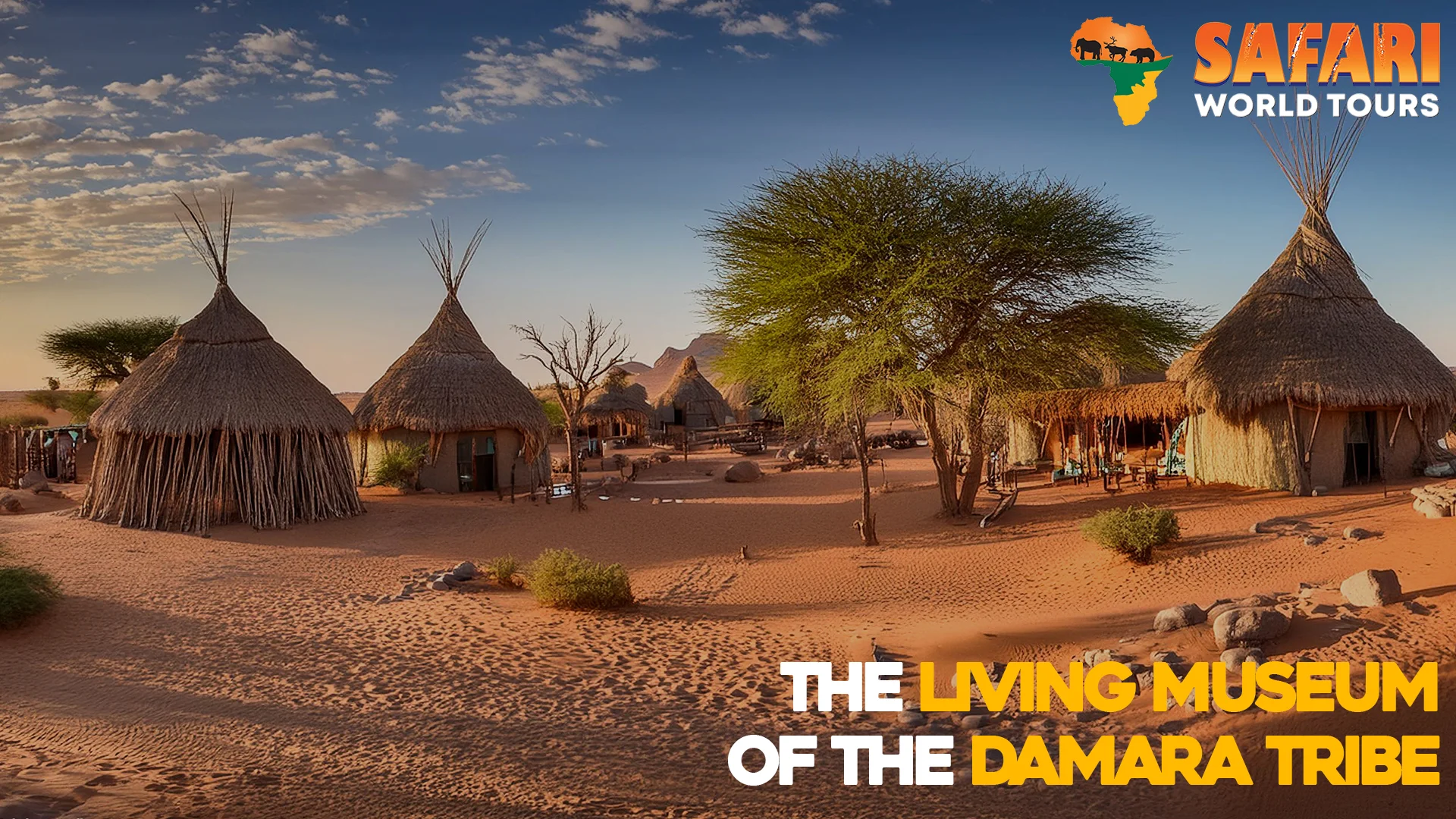Directly on the D2612, about ten kilometers to the north of the well-known rock engravings site of Twyfelfontein may be found the Living Museum of the Damara.
It was opened for business in February of 2010, making it Namibia’s very first traditional Damara project. There is no other place in Namibia or the globe where people have the opportunity to experience the traditional culture of the Damara people in this way Living Museum of the Damara.
Damara people have been inhabiting this region of Namibia for an undetermined amount of time, making them one of the country’s oldest ethnic groups alongside the Bushmen.
Their initial traditional civilization consisted of hunter-gatherers as well as herders of cattle, sheep, and goats. Additionally, they made their living through trading goods.

Their community land may be found in the middle of Namibia’s western central region today. Here, near the internationally renowned rock engraving site at Twyfelfontein, a group of Damara people has decided to construct a “Living Museum” to demonstrate to tourists their pre-colonial garb and practices.
This comprises a classic old village with a variety of cottages, some live cattle, singing, dancing, and games, as well as the manufacture of crafts and a blacksmith’s shop where traditional old iron implements are made. They also provide a highly fascinating bush walk. During this visitors may observe examples of trapping, snaring, and a variety of wild foods Living Museum of the Damara.
General Information
Follow the signs to Twyfelfontein, and you will find yourself at the Damara Living Museum in no time. When you get to the point on the D2612 where you turn off to go to Twyfelfontein, you will notice the sign board, and then the Living Museum will be a few hundred meters further on. The museum may be reached quickly and simply by any vehicle.
The Living Museum is open 24/7, 365 days a year, beginning shortly after sunrise and continuing beyond dusk. Because Damara will be present at all times during daylight hours, there is no need to make a reservation in advance. Many lodges and campgrounds in the region may provide overnight accommodations for visitors Living Museum of the Damara.
Museum depicting Damara
The Damara and the Bushmen are both considered to be among the oldest people groups in all of Namibia. During the time of Namibia’s colonialism. The Damara people were unable to successfully defend themselves against invaders due to the lax nature of their social institutions. It is one of the reasons why a significant portion of their culture has been lost to history over time. Within the confines of the Damara People’s Living Museum, an effort was made to re-create the Damara people’s “lost culture.”
Activities offered by the museum
Village life
Learn about the daily activities that take place in our traditional museums. Such as the workings of our traditional blacksmith (the production of weapons and tools). The tanning of leather (the production of traditional clothes). And the making of jewelry and traditional games, the Holy Fire and the making of fire, and a great deal more. The occasion will last around one and a half hours, but you are free to remain as long as you want Living Museum of the Damara.
Bushwalk
The bushwalk never ceases to be a delightful, soothing, and thrilling exercise. It is during which one is transported to earlier times, and one can envision what life in the ancient bush may have been like. The mind begins to stray from its focus. The pressures of daily life and the stresses of the workplace start to recede into the background. And one’s attention is drawn to the things that matter. However, watch where you tread since snakes and scorpions. And other tiny creatures might pose a threat if you step on them.
The nearly contemplative bushwalk that the San had been doing had been continuous. It is accompanied by animated chats with each other. They dig, pick, and pluck to investigate the traces left behind by wild creatures and often pause to do so Living Museum of the Damara.
Damara living culture

The first traditional Damara project in Namibia, the Living Museum of the Damara, may be found near Twyfelfontein. It is also the only museum of its sort in the world. There is no other place in Namibia or the globe where people have the opportunity to experience the traditional culture of the Damara people in this way Living Museum of the Damara.
Lost culture of Damara
Within the confines of the Damara People’s Living Museum, an effort was made to re-create the Damara people’s “lost culture.” The visitors to this museum have the amazing opportunity to study the captivating traditional culture of the Damara people. In doing so, they contribute not only to the maintenance of the culture but also to the steady income of the Damara community, which is responsible for the construction of the museum Living Museum of the Damara.

Conclusion
There is no other place in Namibia or the globe where people have the opportunity to experience. It is the traditional culture of the Damara people in this way.
The Damara and the Bushmen are both considered to be among the oldest people groups in all of Namibia. Their ancestors were a blend of hunter-gatherers and herders of cattle, goats, and sheep. It is in their original society, which was a hybrid of the two.
During the time of Namibia’s colonialism. The Damara people were unable to successfully defend themselves against invaders. This is due to the lax nature of their social institutions. It is why a significant portion of their culture has been lost to history with time Living Museum of the Damara.
An effort was undertaken to re-create the “lost culture” of the Damara people inside the confines of the Damara Living Museum. Visitors to this museum have the extraordinary opportunity to learn about the fascinating traditional culture of the Damara people.
In doing so, they not only help to maintain the culture but also provide a reliable source of revenue for the Damara community that was responsible for building the museum. Therefore, this museum is a great place to spend your time and a must-watch Living Museum of the Damara.


